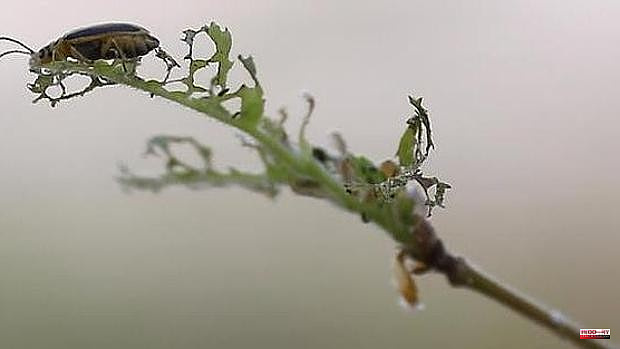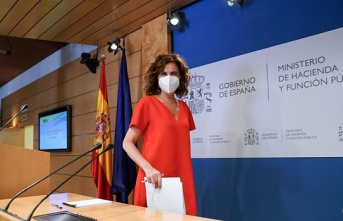You probably don't know that in all of 2021 the City Council checked half a million wells for sewer rats. Or that the district with the most cockroaches, both Eastern and American, is Latina, and far ahead of the rest. Or that, between April and October, the hottest months, is when the most pests and vectors are detected from Madrid Salud: black and gray rats, mice, culicid mosquitoes, black flies, bees, social wasps, human bugs, termites, processionaries, Argentine parrots...
There are almost all of them, but not all of them are dangerous for humans. For example, yesterday we learned that the Environment Department is going to start treating 11,000 of the 70,000 Siberian elms in the city, in its campaign against galeruca, which has been increasing its presence (and deterioration) in this species since 2013.
The Councilor for the Environment, Borja Carabante, explained that the treatment used to eliminate this beetle, which has been expanding since 2013, is done by endotherapy, with the aim of avoiding the problems derived from fumigation, without generating any residue in the environment. It is one of the pests that only affect the flora.
But there are others that are much more dangerous and that are monitored and controlled daily by Madrid Salud, a municipal body that celebrates its 125th anniversary this June 6. “This is a fairly qualified service. There are types of vectors, such as rats, with which humans are in danger because they are carriers of diseases and, in some cases, serious ones, "explains Jorge Galván, general director of the National Association of Environmental Health Companies (Anecpla). ). «The black rat arrived in Spain in the Middle Ages, with the bubonic plague, and could be the cause of a pandemic: they are vectors with zoonotic diseases, which are transmitted from animals to humans. They are the cause of pandemics, as has been seen with Covid », he explains. It causes, for example, bite fever, hantavirus... It is also true that, of this type of rodent, it is the least common and most fearful of humans.
The gray rat is larger in size, presence and aggressiveness. It is the so-called sewer rat: «The vectorial risk makes them very controlled. The black fly was reduced in the Manzanares area by 87% with interventions between 2020 and 2021, because although in Madrid it does not transmit diseases, it already does in countries like Venezuela, where it causes onchocerciasis (skin problems and even blindness). », but the risk is there.
Another species that is controlled is the tick, which transmits Lyme disease (which ranges from fatigue to facial paralysis); mosquitoes, which can cause dengue, malaria, chikungunya (its translation from African is 'bent in pain', to give you an idea of the consequences); and, as was seen a couple of years ago in Andalusia, the Nile virus fever, which killed eight people.
Outside of the zoonotic species, we have the processionary, which causes hives with the more than 500,000 trichomes that each caterpillar has and that it releases as a defense mechanism. The Argentine parrots, which cause damage to biodiversity, and which are very annoying and harmful: the number of neighborhood complaints has increased by 136% since 2018, with Latina, Usera and Carabanchel being the districts where the highest number of complaints are recorded. There is a municipal plan for their extermination.












